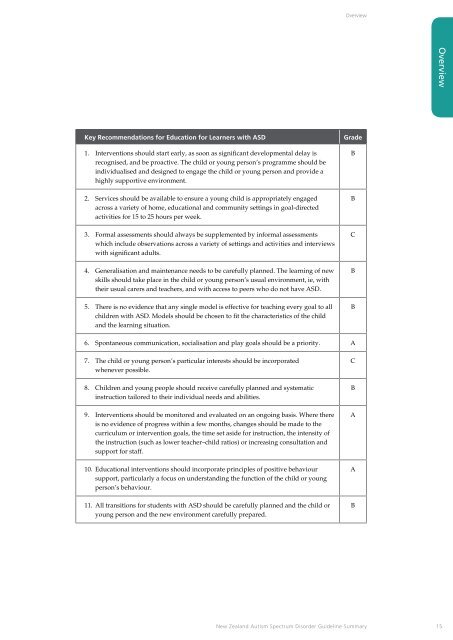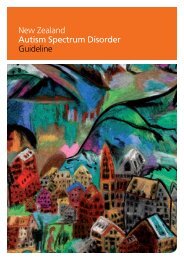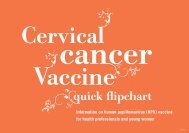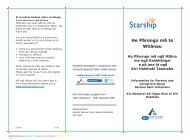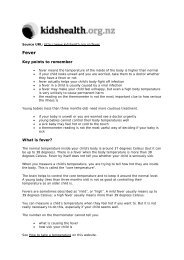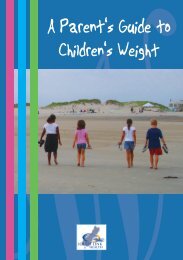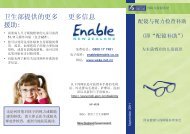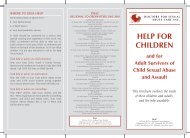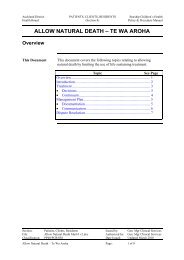New Zealand Autism Spectrum Disorder ... - Ministry of Health
New Zealand Autism Spectrum Disorder ... - Ministry of Health
New Zealand Autism Spectrum Disorder ... - Ministry of Health
You also want an ePaper? Increase the reach of your titles
YUMPU automatically turns print PDFs into web optimized ePapers that Google loves.
Overview<br />
Overview<br />
Key Recommendations for Education for Learners with ASD<br />
1. Interventions should start early, as soon as significant developmental delay is<br />
recognised, and be proactive. The child or young person’s programme should be<br />
individualised and designed to engage the child or young person and provide a<br />
highly supportive environment.<br />
2. Services should be available to ensure a young child is appropriately engaged<br />
across a variety <strong>of</strong> home, educational and community settings in goal-directed<br />
activities for 15 to 25 hours per week.<br />
3. Formal assessments should always be supplemented by informal assessments<br />
which include observations across a variety <strong>of</strong> settings and activities and interviews<br />
with significant adults.<br />
4. Generalisation and maintenance needs to be carefully planned. The learning <strong>of</strong> new<br />
skills should take place in the child or young person’s usual environment, ie, with<br />
their usual carers and teachers, and with access to peers who do not have ASD.<br />
5. There is no evidence that any single model is effective for teaching every goal to all<br />
children with ASD. Models should be chosen to fit the characteristics <strong>of</strong> the child<br />
and the learning situation.<br />
Grade<br />
B<br />
B<br />
C<br />
B<br />
B<br />
6. Spontaneous communication, socialisation and play goals should be a priority. A<br />
7. The child or young person’s particular interests should be incorporated<br />
whenever possible.<br />
8. Children and young people should receive carefully planned and systematic<br />
instruction tailored to their individual needs and abilities.<br />
9. Interventions should be monitored and evaluated on an ongoing basis. Where there<br />
is no evidence <strong>of</strong> progress within a few months, changes should be made to the<br />
curriculum or intervention goals, the time set aside for instruction, the intensity <strong>of</strong><br />
the instruction (such as lower teacher–child ratios) or increasing consultation and<br />
support for staff.<br />
10. Educational interventions should incorporate principles <strong>of</strong> positive behaviour<br />
support, particularly a focus on understanding the function <strong>of</strong> the child or young<br />
person’s behaviour.<br />
11. All transitions for students with ASD should be carefully planned and the child or<br />
young person and the new environment carefully prepared.<br />
C<br />
B<br />
A<br />
A<br />
B<br />
<strong>New</strong> <strong>Zealand</strong> <strong>Autism</strong> <strong>Spectrum</strong> <strong>Disorder</strong> Guideline Summary 15


